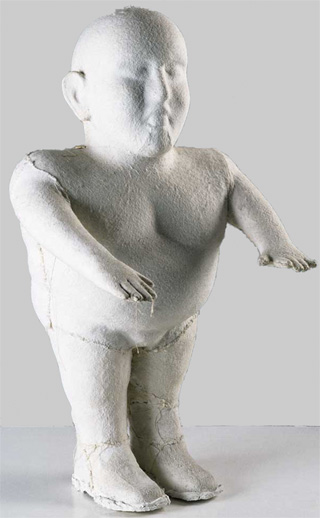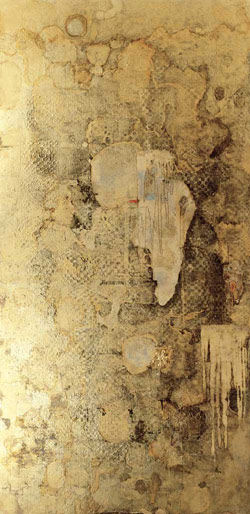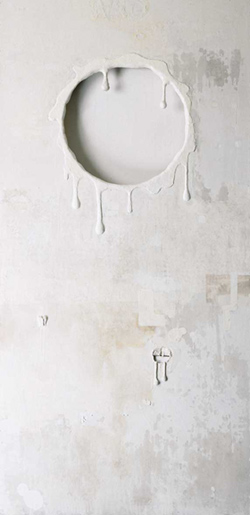Andrea Nurcis
Jump into the hole
2RC Rome - 2003
Curated by Gianluca Marziani
IAndrea Nurcis' work was never intended to be a linear work focused only on a style, a language or a single formal or conceptual research. Through its various exhibitions, installations, video-works, in Italy and abroad, Nurcis has always tried, first of all, to build a space, to delimit a container in which different conceptual and language experiences could coexist with coherence. For this reason the means, materials and techniques used by the artist have never been confined within a single expressive medium and have ranged without limits from the most traditional to the most technologically advanced ones. In this regard it is surprising to note the technical mastery of the artist and his perfect ease with which he moves among the disparate mediums chosen from time to time for his purposes. Obviously, it must be emphasized, it is not the medium itself - that is the fetishism for that given material or for a given artistic technique - which constitutes the meaning of the operation, but rather a more complex and articulated purpose which may not always appear immediate viewer.
It is certain that the work of Andrea Nurcis represents a unique case in the panorama of young Italian art with all the risks and merits that this “uniqueness” of his can contain.
Unlike the current artistic trends, very attentive to the documentation of everyday life through the use of languages based on realism and on the news, Nurcis conceives his works as a visionary experience containing in its structure elements of stratification that cross the history and the sense of time, always looking for a comparison and a dialogue with life, even if often this comparison takes place through the perspective of an obsessive, mental and physical elaboration on the relationship between the meaning of art, the image and the experience of living in its ritualistic and psychic aspects. A path between misery and the preciousness of matter and thought. Poised between the sense of eternity and decay.
This happens when the gold of the tables and the industrial materials, coexisting together, nobly corrupt the surfaces of the paintings. The plastic concreteness of the sculpture is placed in a dialectical relationship with the refined precariousness of the combinations of materials. The surfaces open, oozing precious and crystalline essences. Waves gush out of the shapes and characters of the sculptures in a mysterious and ironic attempt to represent the liquid element plastically. At times authentic cobwebs are deposited on the forms, flies or small insects settle, and worn-out dross of reality remains entangled.
Placed in the gallery, but often in those rooms reserved not for exhibitions but for promotional, archive and office activities, the works observe the world but look at us from another dimension; not looking for balance, they are the result of an exaggeration, of an extremeization of thought and experience. Works filled with meaning up to saturation, up to the risk of their explosion.





